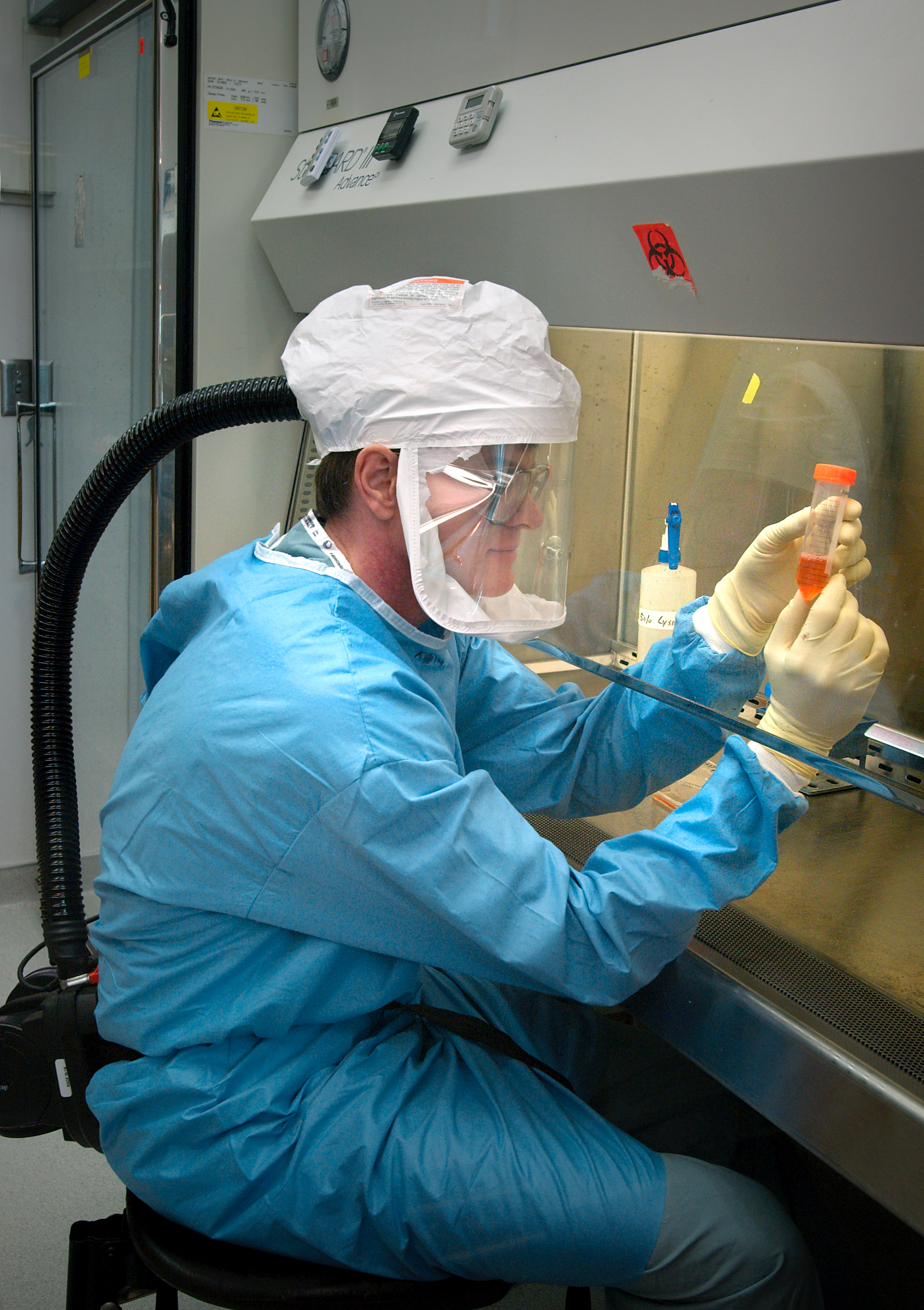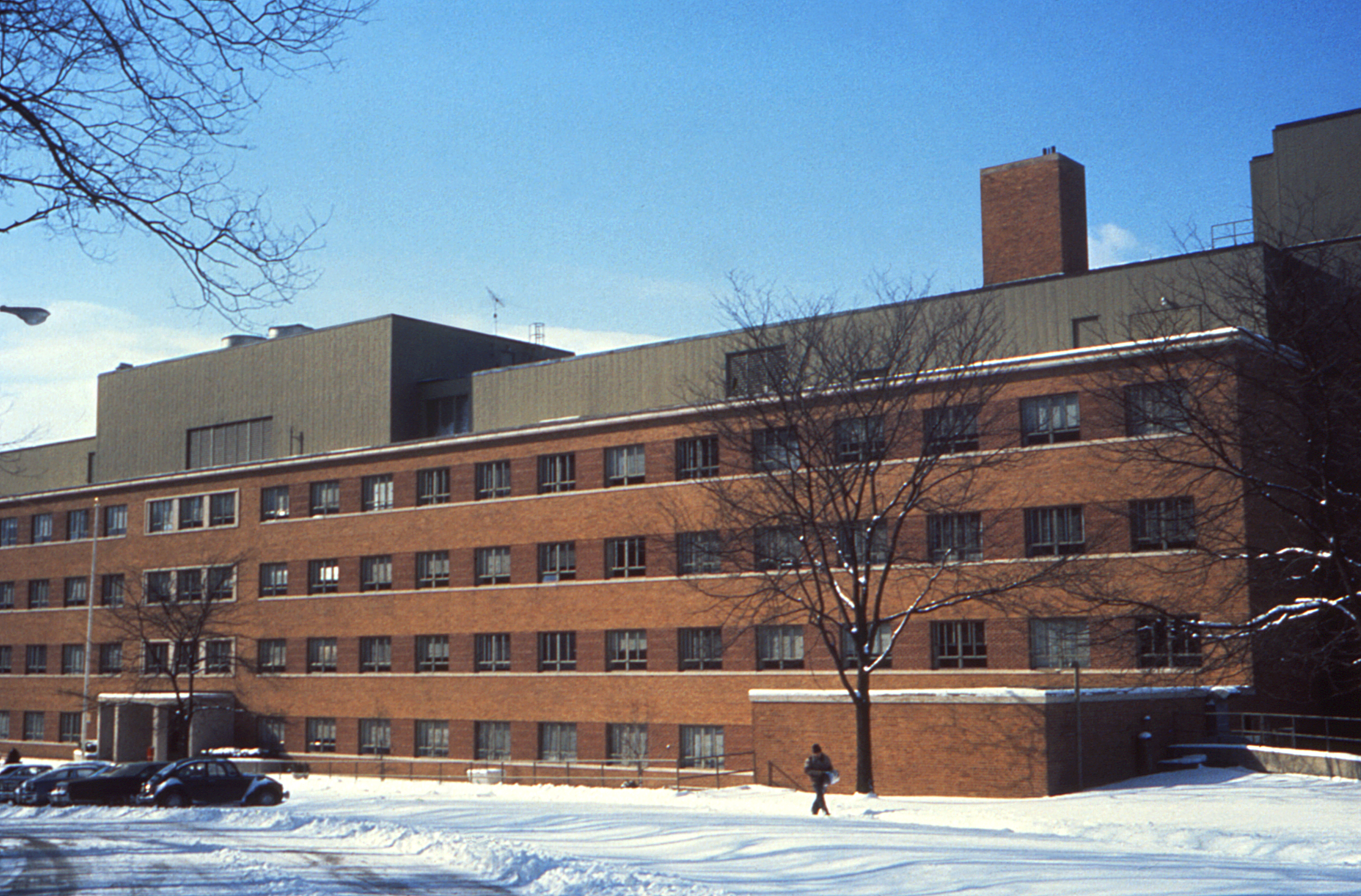|
Respirators
A respirator is a device designed to protect the wearer from inhaling hazardous atmospheres including lead, lead fumes, vapors, gases and particulate matter such as dusts and airborne pathogens such as viruses. There are two main categories of respirators: the ''air-purifying respirator'', in which respirable air is obtained by filtering a contaminated atmosphere, and the ''air-supplied respirator'', in which an alternate supply of breathable air is delivered. Within each category, different techniques are employed to reduce or eliminate noxious airborne contaminants. Air-purifying respirators range from relatively inexpensive, single-use, disposable face masks, known as filtering facepiece respirators, reusable models with replaceable cartridges called elastomeric respirators, to powered air-purifying respirators (PAPR), which use a pump or fan to constantly move air through a filter and supply purified air into a mask, helmet or hood. History Earliest records to 19th c ... [...More Info...] [...Related Items...] OR: [Wikipedia] [Google] [Baidu] |
N95 Respirator
An N95 respirator is a disposable Respirator#Filtering facepiece, filtering facepiece respirator or reusable elastomeric respirator filter that meets the U.S. National Institute for Occupational Safety and Health (NIOSH) N95 standard of air filtration, filtering at least 95% of airborne particles that have a median aerodynamic diameter#Mass median aerodynamic diameter, mass median aerodynamic diameter of 0.3 micrometers under 42 CFR 84, effective July 10, 1995. A surgical N95 is also rated against fluids, and is regulated by the US Food and Drug Administration under 21 CFR 878.4040, in addition to NIOSH 42 CFR 84. 42 CFR 84, the federal standard which the N95 is part of, was created to address shortcomings in the prior United States Bureau of Mines respirator testing standards, as well as tuberculosis outbreaks, caused by the HIV/AIDS in the United States, HIV/AIDS epidemic in the United States. Since then, N95 respirator has continued to be used as a Source control (respiratory ... [...More Info...] [...Related Items...] OR: [Wikipedia] [Google] [Baidu] |
Elastomeric Respirator
Elastomeric respirators, also called reusable air-purifying respirators, seal to the face with elastomeric material, which may be a Natural rubber, natural or synthetic rubber. They are generally reusable. Full-face versions of elastomeric respirators seal better and protect the eyes. Elastomeric respirators consist of a reusable mask that seals to the face, with exchangeable filters. Elastomeric respirators can be used with chemical cartridge filters that remove gases, Mechanical filter (respirator), mechanical filters that retain particulate matter, or both. As particulate filters, they are comparable (or, due to the quality and error-tolerance of the elastomeric seal, possibly superior) to filtering facepiece respirators such as most ''disposable'' N95 respirators and FFP masks. Elastomeric air-purifying respirators are designed to be safely reused for years. Provided the cartridge integrity and filter have not been compromised, current practice shows that the filters could b ... [...More Info...] [...Related Items...] OR: [Wikipedia] [Google] [Baidu] |
Powered Air-purifying Respirator
A powered air-purifying respirator (PAPR) is a type of respirator used to safeguard workers against contaminated air. PAPRs consist of a headgear-and-fan assembly that takes ambient air contaminated with one or more type of pollutant or pathogen, actively removes (filters) a sufficient proportion of these hazards, and then delivers the clean air to the user's face or mouth and nose. They have a higher Respirator assigned protection factors, assigned protection factor than filtering facepiece respirators such as N95 masks. PAPRs are sometimes called positive-pressure masks, blower units, or just blowers. Description The modularity of PAPRs allows them to be customized for different working environments. Regardless of type, a PAPR consists of: * some kind of headgear (mask or hood), * a powered (motor-driven) fan (mechanical), fan which forces incoming air into the device, * a filter (air), filter (or multiple filters) for delivery to the user for breathing, and * a battery or ... [...More Info...] [...Related Items...] OR: [Wikipedia] [Google] [Baidu] |
NIOSH
The National Institute for Occupational Safety and Health (NIOSH, ) is the United States federal agency responsible for conducting research and making recommendations for the prevention of work-related injury, illness, disability, and death. Its functions include gathering information, conducting scientific research both in the laboratory and in the field, and translating the knowledge gained into products and services.About NIOSH National Institute for Occupational Safety and Health. Among NIOSH's programs are determination of recommended exposure limits for toxic chemicals and other hazards, field research such as the [...More Info...] [...Related Items...] OR: [Wikipedia] [Google] [Baidu] |
Filtering Facepiece Respirator
Mechanical filters, a part of particulate respirators, are a class of filter for air-purifying respirators that mechanically stops particulates from reaching the wearer's nose and mouth. They come in multiple physical forms. Mechanism of operation Mechanical filter respirators retain particulate matter such as dust created during woodworking or metal processing, when contaminated air is passed through the filter material. Wool is still used today as a filter, along with plastic, glass, cellulose, and combinations of two or more of these materials. Since the filters cannot be cleaned and reused and have a limited lifespan, cost and disposability are key factors. Single-use, disposable and replaceable-cartridge models exist. Mechanical filters remove contaminants from air in the following ways: # by ''interception'' when particles following a line of flow in the airstream come within one radius of a fiber and adhere to it; # by ''impaction'', when larger particles unable to ... [...More Info...] [...Related Items...] OR: [Wikipedia] [Google] [Baidu] |
30 Cfr Part11 Label
3 (three) is a number, numeral and digit. It is the natural number following 2 and preceding 4, and is the smallest odd prime number and the only prime preceding a square number. It has religious and cultural significance in many societies. Evolution of the Arabic digit The use of three lines to denote the number 3 occurred in many writing systems, including some (like Roman and Chinese numerals) that are still in use. That was also the original representation of 3 in the Brahmic (Indian) numerical notation, its earliest forms aligned vertically. However, during the Gupta Empire the sign was modified by the addition of a curve on each line. The Nāgarī script rotated the lines clockwise, so they appeared horizontally, and ended each line with a short downward stroke on the right. In cursive script, the three strokes were eventually connected to form a glyph resembling a with an additional stroke at the bottom: ३. The Indian digits spread to the Caliphate in the 9th ... [...More Info...] [...Related Items...] OR: [Wikipedia] [Google] [Baidu] |
Sara Little Turnbull
Sara Little Turnbull (née Finkelstein; September 21, 1917 – September 3, 2015) was an American product designer, design innovator and educator. She advised corporate America on product design from 1935 – 2005, and has been described as "corporate America's secret weapon."Vienne, Veronique (November 2000Sara Little Turnbull, Corporate America’s Secret Weapon ''Metropolis Magazine'' She was one of America's early industrial designers and one of the first women to succeed in a male-dominated post-World War II design industry. She helped to create essential products from medical masksThe Mask NPR throughline to s, and founded and led both the Sara Little Center for Design and the Process of Change: Laboratory ... [...More Info...] [...Related Items...] OR: [Wikipedia] [Google] [Baidu] |
Ribbon
A ribbon or riband is a thin band of material, typically cloth but also plastic or sometimes metal, used primarily as decorative binding and tying. Cloth ribbons are made of natural materials such as silk, cotton, and jute and of synthetic materials, such as polyester, nylon, and polypropylene. Ribbon is used for useful, ornamental, and symbolic purposes. Cultures around the world use ribbon in their hair, around the body, and as ornament on non-human animals, buildings, and packaging. Some popular fabrics used to make ribbons are satin, organza, sheer, silk, velvet, and grosgrain. Etymology The word ribbon comes from Middle English ''ribban'' or ''riban'' from Old French ''ruban'', which is probably of Germanic origin. Cloth Along with that of fringes, and other smallwares, the manufacture of cloth ribbons forms a special department of the textile industry">textile industries. The essential feature of a ribbon loom is the simultaneous weaving in one loom frame of two ... [...More Info...] [...Related Items...] OR: [Wikipedia] [Google] [Baidu] |
John Stenhouse
John Stenhouse FRS FRSE FIC FCS (21 October 1809 – 31 December 1880) was a British chemist. In 1854, he invented one of the first practical respirators. He was a co-founder of the Chemical Society in 1841. Life John Stenhouse was born in Barrhead in Glasgow on 21 October 1809. He was the eldest son of William Stenhouse, a calico-printer in the family firm of John Stenhouse & Co of 302 High Street, Glasgow, and Elizabeth Currie; he was the only one of their children to survive beyond infancy. After education at the Glasgow Grammar School, he studied at the University of Glasgow from 1824 to 1828. Initially he intended to pursue a career in literature, but later his interests switched to chemistry, which he studied first under Professor Thomas Graham at the university and then under Dr. Thomas Thomson at Anderson's University in Glasgow (now part of the University of Strathclyde, one of whose buildings is named after him). During 1837–1839, he attended the chemical ... [...More Info...] [...Related Items...] OR: [Wikipedia] [Google] [Baidu] |
Melt Blowing
Melt blowing is a conventional fabrication method of micro- and nanofibers where a polymer melt is extruded through small nozzles surrounded by high speed blowing gas. The randomly deposited fibers form a Nonwoven fabric, nonwoven sheet product applicable for filtration, sorbents, apparels and drug delivery systems. The substantial benefits of melt blowing are simplicity, high specific productivity and solvent-free operation. Choosing an appropriate combination of polymers with optimized rheological and surface properties, scientists have been able to produce melt-blown fibers with an average diameter as small as 36 nm. History During volcanic activity a fibrous material may be drawn by vigorous wind from molten basaltic magma called Pele's hair. The same phenomenon applies for melt blowing of polymers. The first research on melt blowing was a naval attempt in the US to produce fine filtration materials for radiation measurements on drone aircraft in the 1950s. Later on, Ex ... [...More Info...] [...Related Items...] OR: [Wikipedia] [Google] [Baidu] |
How A Man May Breath Safely In A Poisonous Atmosphere B10154140 010 Tif Zw12z649n
How may refer to: * How (greeting), a word used in some misrepresentations of Native American/First Nations speech * How, an interrogative word in English grammar Art and entertainment Literature * ''How'' (book), a 2007 book by Dov Seidman * ''HOW'' (magazine), a magazine for graphic designers * H.O.W. Journal, an American art and literary journal Music * ''How?'' (EP), by BoyNextDoor, 2024 * "How?" (song), by John Lennon, 1971 * "How", a song by Clairo from ''Diary 001'', 2018 * "How", a song by the Cranberries from ''Everybody Else Is Doing It, So Why Can't We?'', 1993 * "How", a song by Daughter from '' Not to Disappear'', 2016 * "How", a song by Lil Baby from '' My Turn'', 2020 * "How", a song by Maroon 5 from '' Hands All Over'', 2010 * "How", a song by Regina Spektor from '' What We Saw from the Cheap Seats'', 2012 * "How", a song by Robyn from ''Robyn Is Here'', 1995 Other media * HOW (graffiti artist), Raoul Perre, New York graffiti muralist * ''How'' (TV seri ... [...More Info...] [...Related Items...] OR: [Wikipedia] [Google] [Baidu] |








